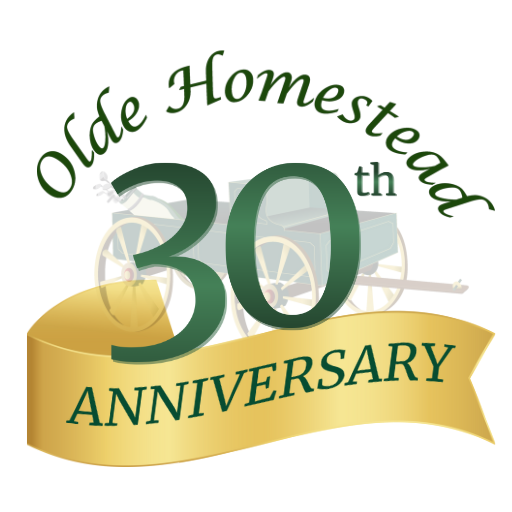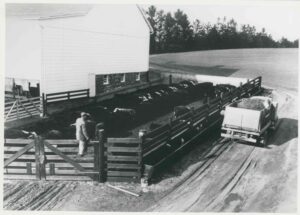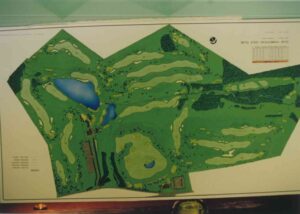
Left to Right: Miriam Snyder, Mabel Woodring, Edna Long, Jennie Long, Dick Woodring, Grace Long, Ella Wehr, Hattie Mantz, Cora Strauss, Anna Snyder, Carl Snyder, Arthur Snyder, Wellington Long
As the sun rises over the rolling hills, lush green grass, and towering trees of Olde Homestead, we reflect on a story that spans centuries—a story rooted in resilience, heritage, and unwavering family commitment. What began as a humble homestead in the 1700s has grown into a cherished destination for community, recreation, and lasting memories.
Our legacy began in the 1750s when the Schneider family immigrated from Germany and settled on this very land. Through generations, it has remained in the extended family—nurtured, protected, and preserved. Today, Justin Smith and his children represent the 9th and 10th generation of stewards, carrying forward a proud tradition that has endured for over 270 years.
Currently, 250 acres of the original homestead form the heart of Olde Homestead Golf Club. As you walk the course, the history beneath your feet comes to life. Historic structures like the bank barn, potato barn, corn cribs, and the farmhouse-turned-clubhouse whisper stories of the land’s rich agricultural past.

Arthur Snyder harvesting Potatoes. The tree in the image is the only tree among the 20 acres and was hit by a plane.
One of the most reminiscent reminders of that past is the original summer kitchen, which sits between the 8th green and 9th tees, Dating back to the 18th century and was beautifully restored, is the last remaining structure from the original farm. In its day, it was used during the warmer months to cook meals and keep the main house cool. Nearby, other landmarks continue to tell their stories—quiet yet powerful symbols of the generations who lived and worked here.
In 2018, the historic bank barn—once used to store hay and straw on the upper level with livestock housed below—was beautifully restored and transformed into a rustic event venue. After the family transitioned away from farming in the late 1980s, the barn became home to Carl D. Snyder’s remarkable collection of over 30 antique wagons, each reflecting a piece of agricultural history. Today, the barn stands not only as a functional gathering space but also as a tribute to the farm’s rich past.
Another beloved treasure is Schneider’s One-Room Schoolhouse, which sits aside the tees for the 13th hole, and was built in response to an 1850 mandate from the Pennsylvania Department of Education. The original wooden structure was replaced by a brick building in the 1880s and served the community until 1946. Fully restored in 1999 and located near hole 13, the schoolhouse offers a rare window into the past. Peer inside and you’ll see preserved desks, chalkboards, books on farming, and maps once used by teachers. The school taught students through eighth grade, focusing heavily on agriculture—reflecting the farming backgrounds of nearly every child who attended.
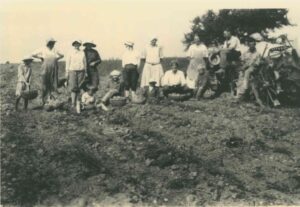
Left to Right: Miriam Snyder, Mabel Woodring, Edna Long, Jennie Long, Dick Woodring, Grace Long, Ella Wehr, Hattie Mantz, Cora Strauss, Anna Snyder, Carl Snyder, Arthur Snyder, Wellington Long
The farm’s expansion began in 1886, when Daniel Snyder passed the daily operations to his son, Nathan Snyder. Nathan grew the farm to 200 acres, laying the groundwork for future generations. His son, Arthur Snyder, and Arthur’s wife, Anna, carried on the family’s agricultural traditions. Horses were used to plant and harvest crops like potatoes, wheat, and corn, while Anna and other family members joined in the labor—gathering potatoes by hand and caring for the land.
Carl Snyder, Arthur and Anna’s son, was born in 1923 in the farmhouse that now serves as the clubhouse. Photos from the era show young Carl running barefoot through the fields with his loyal dog—a glimpse into a simpler, rural life. But there were hardships too, fire destroyed the original log home in 1920. The family also endured the absence of loved ones during wartime. Carl served with distinction in World War II as part of the 34th Red Bull Infantry Division. His service took him through North Africa and Italy, where he earned the Silver Star, Bronze Star, and Purple Heart.
After returning home from the war, Carl married Kathryn, and together they settled into a farmhouse adjacent to his father’s farm. Over the years, Carl expanded the farm to over 700 acres. As time passed and the family gradually moved away from full-time farming, portions of the land were sold. In 1951, Arthur and Anna built what is now known as the Carriage House. Throughout the years, it served a variety of purposes—from clubhouse and golf shop to an event venue in 2014. In 2024, the Carriage House was thoughtfully renovated and expanded into a rustic-modern event venue, blending original charm with updated design to create a welcoming space for new memories.
The dream of transforming the family farm into a public golf course took shape in 1993, when Carl, along with his daughter Sally and her husband Glen, began to envision something new. Renovations to the Carriage House began in 1994 to serve as the second clubhouse for the practice facility. The course officially opened in 1995, with family and staff proudly among the first to tee off.
Many other milestones mark the passing of time. In the early 2000s, a tornado tore the roof off the practice facilities’s covered driving range. A par-3 course was later added to the upper north corner of the property, offering new ways for guests to enjoy the grounds. All green flags were replaced by windsocks to proudly feature the Pennsylvania German flag, Carl was part of the committee that designed the flag, honoring the family’s heritage and the region’s cultural roots.
Now, in 2025, we celebrate 30 years as a golf course and event destination—but more importantly, we honor a legacy that has endured for nearly three centuries.
We are deeply grateful to everyone who has been part of this incredible journey—our family, staff, guests, and community. From our roots as a working farm to our evolution into a cherished gathering place, Olde Homestead stands as a living tribute to tradition, transformation, and the enduring value of hospitality.
Thank you for celebrating 30 incredible years with us. We look forward to many more generations of memories, connection, and community.
